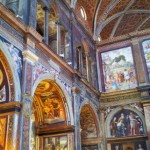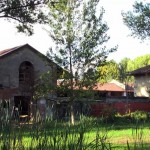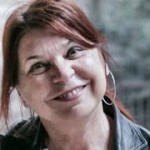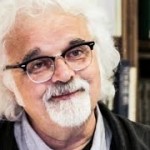A monastery filled with art treasures
Milan: San Bernardino alle Ossa
The decorative charnel house and the Basilica of St. Stefano
Slow Tour in Milan at the Basilica of Santo Stefano and the famous charnel house St. Bernardino, dating back till the 17th century.
The sanctuary of San Bernardino alle Ossa is a work of art: the idea of arranging the bones of the dead in a more or less artistic and decorative manner is very strange. It is both fascinating and disturbing… maybe it is fascinating because it is disturbing!
What’s the history behind this work of art?
⇒ Watch the full web serie Milan & Leonardo da Vinci
Cover pic courtesy of Flickr User @PedroCaetano
Visit Turismo Milano official website
Video full text: Santo Stefano and the decorative charnel house
This is a charnel house that was very popular in the 17th century.
The idea of arranging the bones of the dead
in a more or less artistic and decorative manner is very strange.
This may even be the final resting place of Leonardo da Vinci’s somewhat strange and controversial mother, Caterina.
It’s a slightly macabre masterpiece,
and it reminds us all that death is inevitable and that life passes quickly.
And so we reduce ourselves.
Remember that you must die!
And someone might say – “Let me make a note of that!”
The Sanctuary of San Bernardino alle Ossa is a work of art.
How does it make people feel? Let me ask one of the visitors here.
It’s both fascinating and disturbing.
It’s fascinating because it is disturbing!
So what’s the history behind this work of art?
The parish priest of the nearby basilica of Santo Stefano is about to tell me.
It all began in 1145, when Goffredo da Bussero had a small hospital built,
in the meadow opposite, to look after the poor.
When the people being treated in the hospital died,
if they were really poor and had no relatives, they would be buried in the area around here.
And so the area opposite the basilica of Santo Stefano had become a graveyard.
But it was small.
Later, in the year 1210, a chamber was built to house the bones,
and, at the end of the 17th century, it became this chapel.
It had already been conceived to be like this in the 17th century.
It was the architect Merlo who came up with this work of art,
which, when all is said and done, is a conceptual work, because it expresses many meanings.
Perhaps today’s artists, if they had the raw materials at their disposal, might also be able to reproduce it.
The idea is that of inviting us to reflect on the meaning of life.
Moreover, in 1630 there was an outbreak of the plague in Milan.
In the main, those buried here were the poor, strangers,
the members of the religious orders who ran the hospital and the executed.
Many of these bear the mark of the final coup de grâce,
Piazza Santo Stefano was, for a while, a place of torture.
The painting of Our Lady of Sorrows reveals all the suffering of those left behind.
Architecture and history have left us some signs
of what we have called “A Milan with its heart in its hand”,
which was there then and still remains to this day, even if it is a bit more hidden away.
A Milan that opens its doors to the most needy.
It’s no coincidence that the diocese decided to transform the Basilica of Santo Stefano into the parish for migrants.
The first thing that migrants who are believers ask for, in addition to a job and somewhere to live,
is to be able to practise their faith.
The key to success is to help people to come together.
I’m convinced that the racism that one sees at certain levels is born of ignorance,
where ignorance means never really having looked into the eyes of a migrant.
When one succeeds in bringing people together and getting them to know one another, fear vanishes.
If there’s one thing that being in here makes me realise, it’s that we really all are equals!
It’s absurd to think that all these poor devils, that counted for nothing in life,
now lie here in this way and are visited by so many people every day.
And it is in the triumph of life after death that what we were when we were alive disappears.
Rising ever upwards towards the light, there’s the cloud where God is hiding.
We’re going to the Basilica of Santo Stefano,
where the Peruvians are preparing a great celebration!
A big procession in which a painting is carried.
Where there’s a Peruvian there’s a picture of the Lord of the Miracles.
Every three years the celebration moves to the Milan Cathedral, with the Cardinal and up to 8000 people.
8000 Peruvians come from all over Italy to have an unbelievable celebration here in Milan,
Something that brings us closer to other customs and cultures!
How Andean, how Peruvian! But in our country, how beautiful!
I really adore the Andes and it’s so strange finding them here.
The journey becomes mythical.
In our daily life it becomes the hassle of living together.
This year, at last, saw the beatification of Monsignor Romero,
the Archbishop killed in El Salvador.
Some time ago I organised a photographic exhibition in my parish.
One of the photos shows the moment he was martyred,
with the four women who were holding the dying archbishop and carrying him outside.
One of these four women came to introduce herself to me. She now works as a carer in Milan.
Visit Milan: helpful hints
Italian name: Milano
Arrival
Milan has got three airports:
- Malpensa Airport is the largest international & intecontinental Airport in Northern Italy. 30 miles Northwest from the city centre. Connections:
→ Train Malpensa Express: trains leaves every 30 minutes in each direction, connecting the Airport to Milan Grand Central Station or Cadorna Railway Station. Terminals 1 and 2. It takes 45 min, price: 14 €
→ Shuttle Bus: Malpensa Shuttle and Malpensa Bus Express connect the airport to Milan Grand Central Railway Station and Milan’s Underground Network. Terminals 1 and 2. It takes 60/70 min, price: 8 € - City Airport Linate is an international airport connecting Milan with main European cities, located just 4 miles from the city centre. Connections by shuttle: Atm Bus n. 73 from Milano Duomo M1 – M3 (Piazza Diaz, direction: San Babila), first ride at 5.35 am, last one at 00.35. Frequency: every 10 min, price 1,5 €
- Milan Bergamo Airport Orio al Serio is mainly low cost flights Airport, located 30 miles Northwest from Milan. Connections only by Shuttle: There are 4 different bus companies, pricing changes from 5 up to 8 €
Transports
ATM is Milan public transport service both for bus, tram and subway. Single ticket costs 1.50€ for 90-min ride. Consider daily/weekly subscriptions. You can buy tickets also texting to 48444. Milan Subway is the longest in Italy, covering 95 km: Donwload and check the map.
Moving in town can be nice also by bike: Milan has got a powerfull bike sharing service providing both regular and e-bikes. Here is the experience of our Ambassador Kim Harding with BikeMi service and a useful video of our Ambassador Roxana explaining how does it work. Car Sharing is also good with many different companies to choose.
Try also the local urban railway train, called Passante Ferroviario, check the experience of our Ambassador Roxana Iacoban travelling by local train in town.
What to do in Milan
Milan is the Italian financial center and one of the European capitals of Fashion. Known for its nightlife as well.
Some tips on Italia Slow Tour: watch our web serie about Leonardo da Vinci’s places, climb on top of the Duomo, visit Prada Foundation, Museums and Art Galleries, taste some fine gelato and try the local Aperitivo and – not joking – enjoy a sailing trip (!!) or some time deep in the nature close to some actual farms and fields.
Where to sleep
Accomodations are quite expensive in Milan, fares rise up and hotels get full according to the rich event calendar of the city (see: Fashion Week, Salone del mobile, Big concerts, Theatre and Sport events, etc.). If you are not specifically interested in any of those, try to travel during other periods to save some money.
Italia Slow Tour recommends:
- Hotel Cervo in Garibaldi District if you want to stay close to city centre and enjoy the nightlife
- Hotel Concorde located on the Green Way Milan-Lecco to Lake Como, if you want to move around adn travel by bike
Shopping in Milan
The famous Fashion District involves the following streets/areas: Via Montenapoleone, via Manzoni, via della Spiga and Corso Venezia. The so called “Quadrilateral of Fashion”. Here you can find all kind of brands and shops. Easy to reach by Subway (stop at Montenapoleone station).
Don’t miss the Street Markets! Almost every day you can find one: best are the ones in Viale Papiniano (on Tuesday) and Via Fauchè (on Saturday). More on the official website of weekly street markets. If you are into sustainable local products, Milan has got 8 actual farms in town and a green Earth Market.
If you are interested in Outlet Shopping, in the outskirt of Milan you can find 4 different Fashion Outlets, in a radius of 62 miles. Here you can find everyday a lot of famous high quality Italian brands on sale, with prices cut off up to 50%. All the outlets are connected to the center of Milan by Shuttle Bus:
- Serravalle Designer Outlet – Shuttle departure from Milan Central Station or Cairoli square
- Fidenza Village Outlet Shopping – Shuttle departure from Piazza della Repubblica 5, at the corner with Turati st.
- Vicolungo The Style Outlets – Shuttle departure from Cairoli square
- Rodengo-Saiano Franciacorta Outlet Village – Shuttle departure from Cairoli square















1 Comment
Il mio Slow Tour a Milano | Nomadizziamoci
[…] San Bernardino alle Ossa e la Basilica di Santo Stefano […]